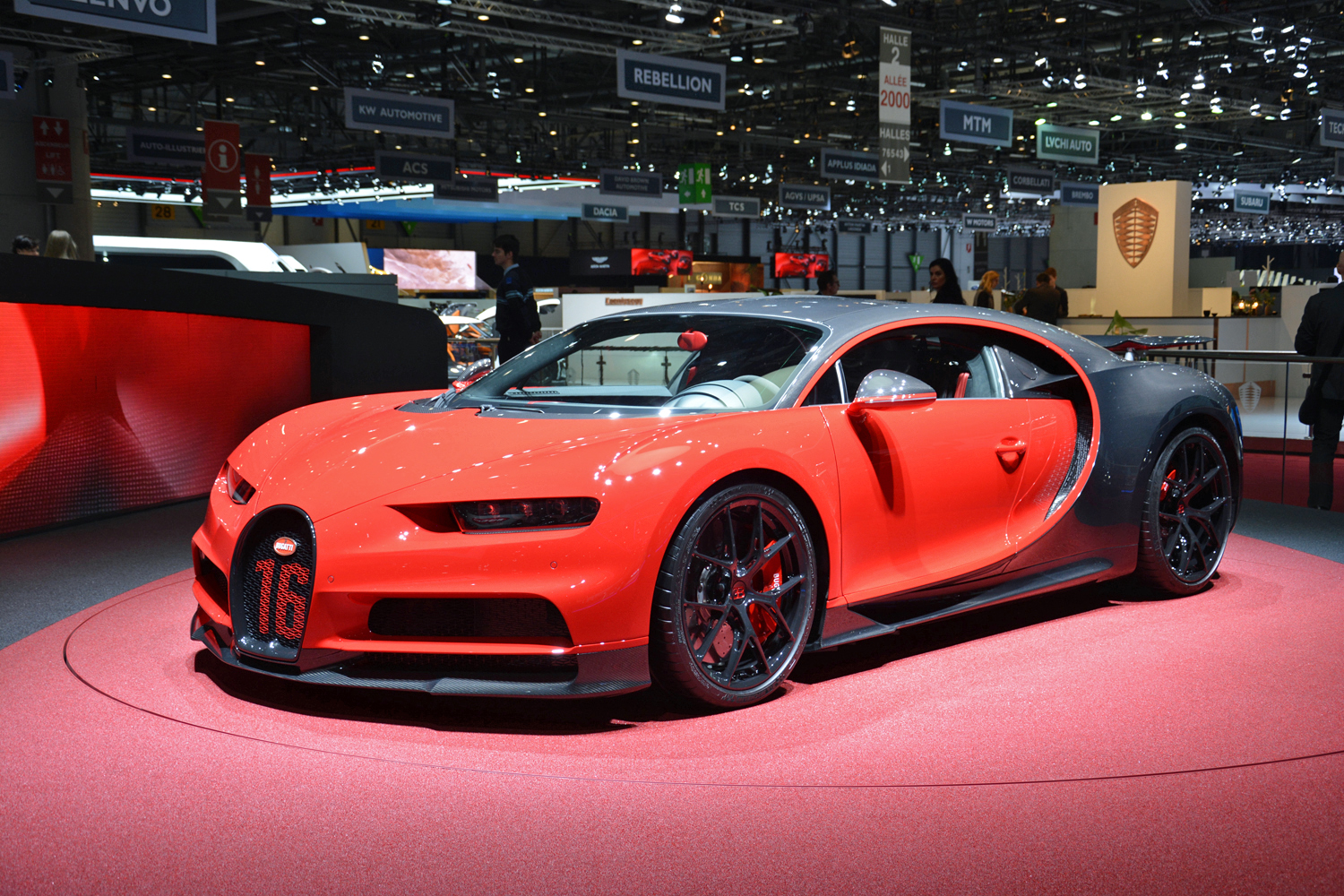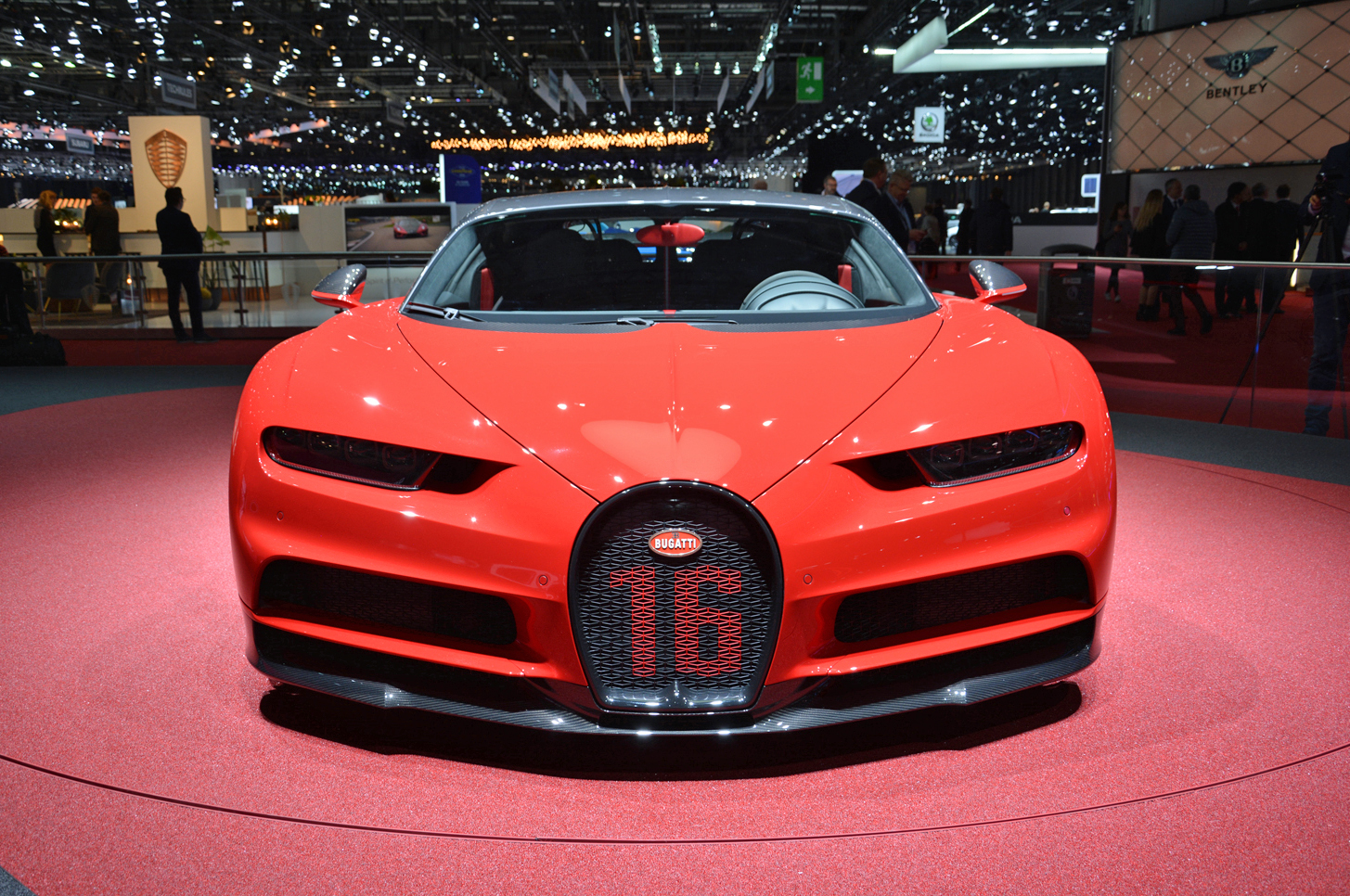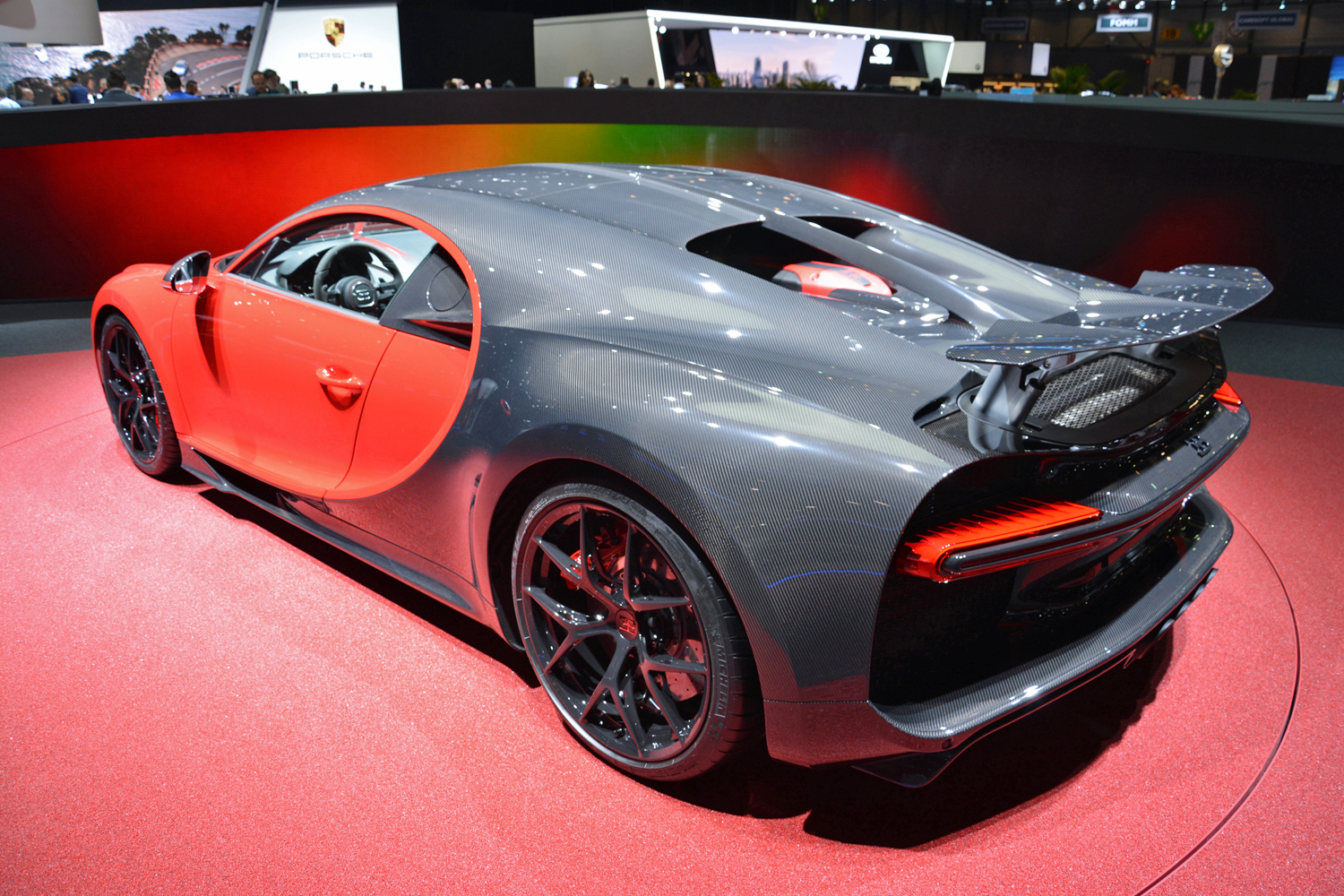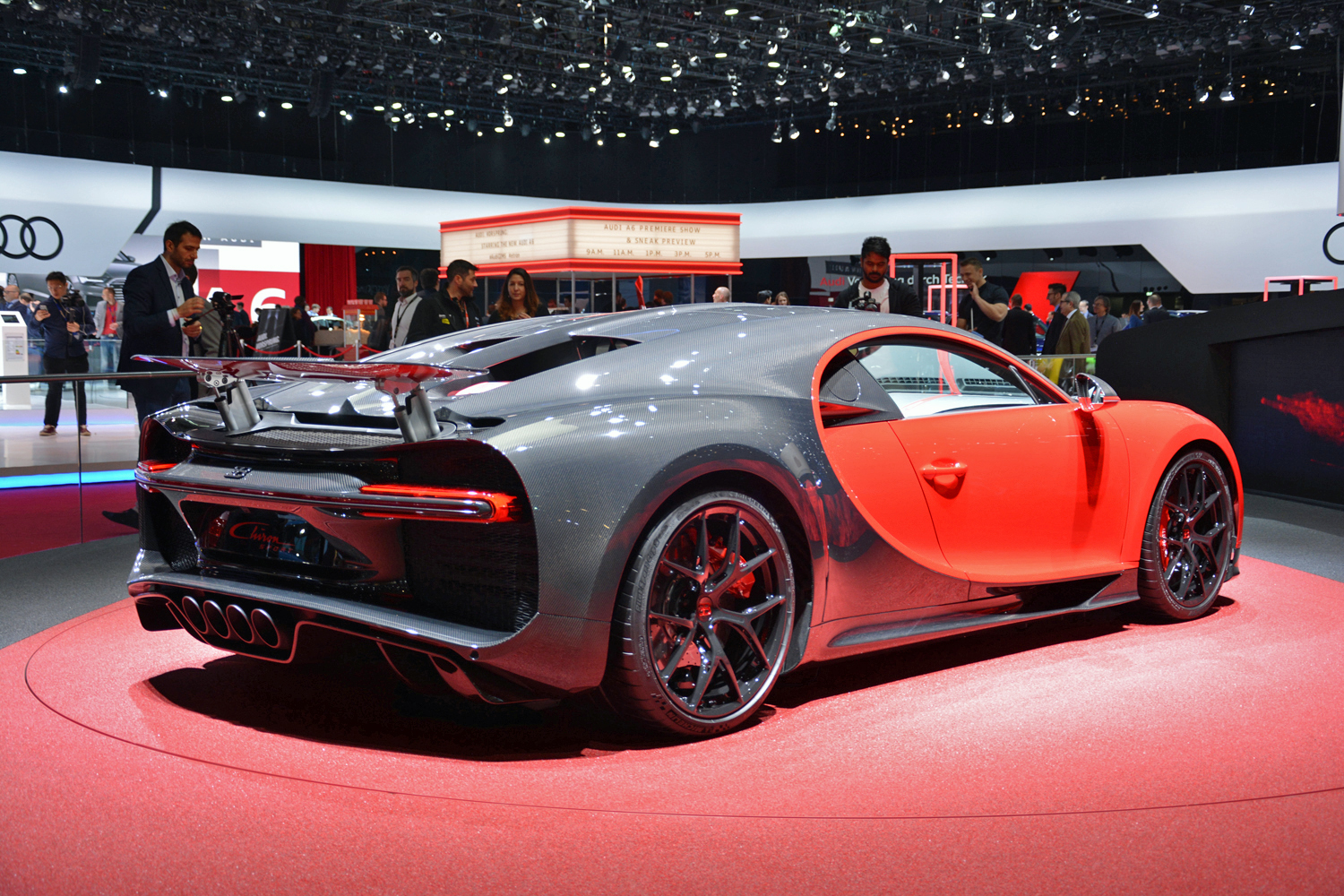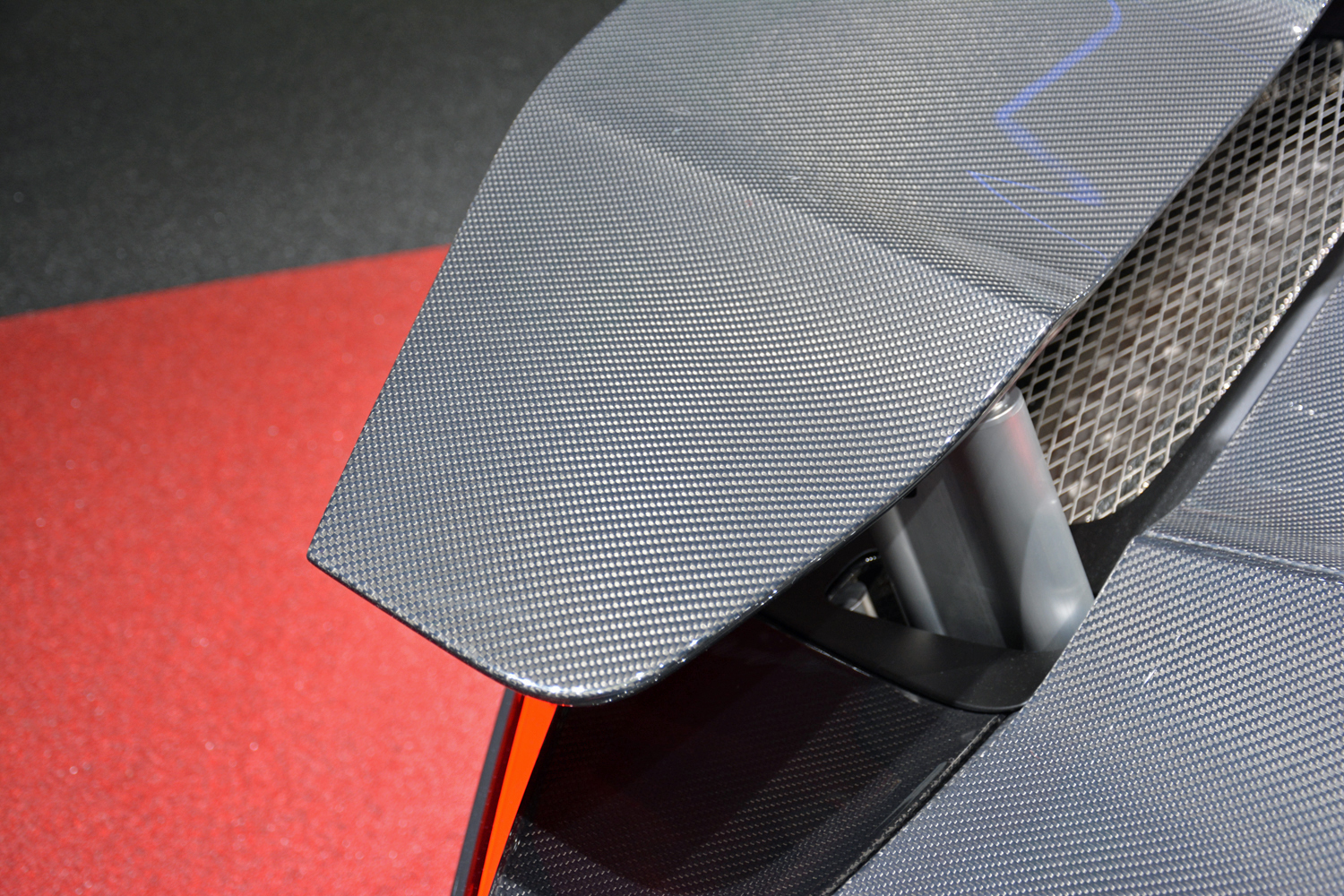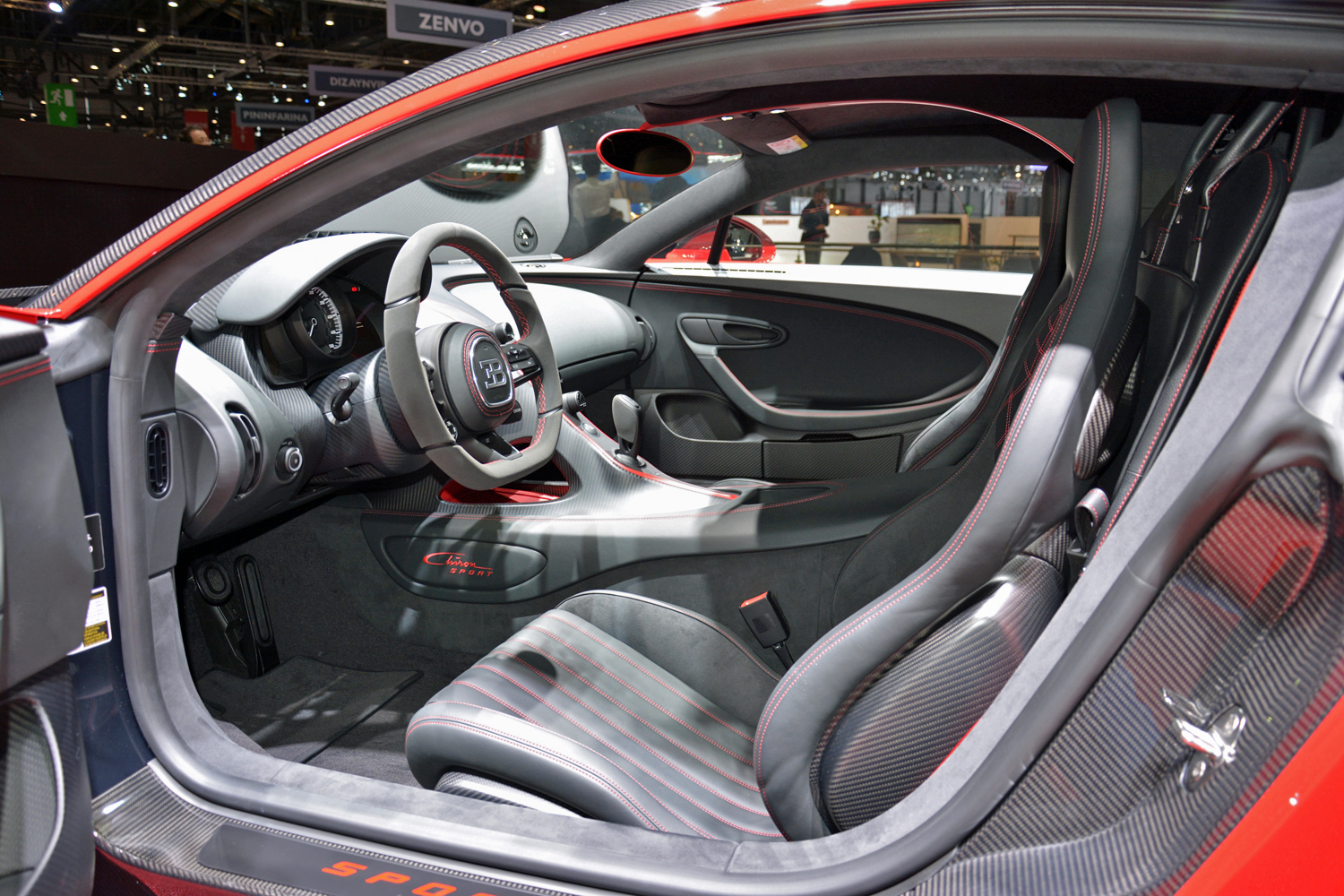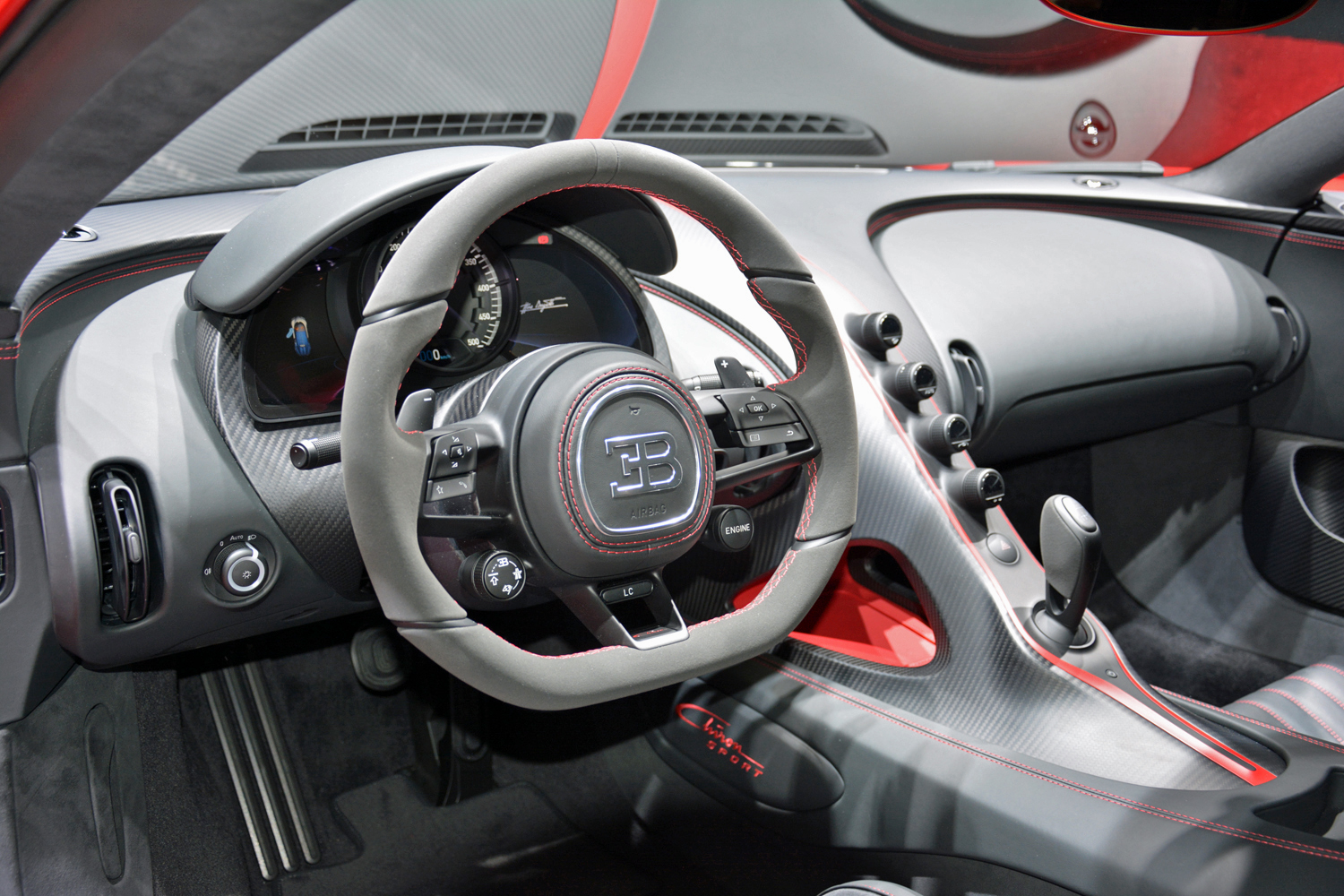With a quad-turbocharged 16-cylinder engine, the Bugatti Chiron is nothing short of jaw-dropping. But there’s always room for improvement, according to the company. It introduced a more agile model named Chiron Sport during the Geneva Auto Show this week that promises to satisfy enthusiasts seeking a sharp, driver-oriented machine.
Leaving well-enough alone isn’t Bugatti’s way of thinking. The French company claims it has significantly improved the Chiron’s handling by putting together an upgrade package that delivers a stiffer suspension and more responsive steering. Torque vectoring — a technology that independently distributes torque to the wheels on each side of the car as needed — helps boost driver engagement.
Bugatti also added lightness, to borrow a phrase from Lotus founder Colin Chapman. It made parts like the intercooler cover and the windshield wiper arms out of carbon fiber, its engineers developed lighter wheels for the Sport, and they shaved excess mass from the rear window. All told, the newest version of the Chiron weighs approximately 40 pounds less than the regular model. It also has the honor of becoming the first production car equipped with carbon fiber windshield wiper arms.
“The Chiron Sport has become perceptibly more nimble, and its new agility, especially in tight corners, makes for a much more emotional experience for the driver on winding roads and handling circuits,” pledged company boss Stephan Winkelmann.
The engine remains essentially unchanged. It doesn’t need upgrades. Hand-built, the 8.0-liter 16-cylinder comfortably churns out 1,500 horsepower at 6,700 rpm and an asphalt-splitting 1,180 pound-feet of torque at 2,000 rpm. The power travels through a seven-speed dual-clutch automatic transmission and an all-wheel drive system before it reaches the road. It performs the benchmark 0-t0-60-mph sprint in 2.3 seconds.
The tweaks come at a cost. The standard Chiron starts at $2.9 million before options enter the equation. The Sport model costs nearly $3.7 million, a figure that makes it the most expensive car displayed at the Geneva show. Bugatti told Digital Trends it sold the example displayed in Geneva shortly after the event opened its doors. Fear not; you can still add one to your collection. Sport models are part of the Chiron’s 500-strong production run, so Bugatti will build as many as needed.
Editors' Recommendations
- Car shows were already endangered. Coronavirus might make them extinct
- How do you get people to take your electric supercar seriously? Set a lap record
- The electric Volkswagen ID Buggy makes even Ferrari drivers stop and stare

